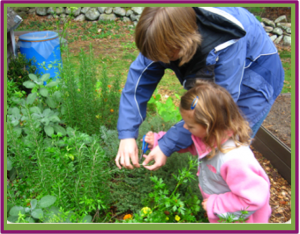Practitioner articles on garden-based learning and food literacy are particularly useful to better understand the movement and its benefits because often dedicated teachers are leaders in the community activism to start, maintain, and incorporate a garden into curriculum. M.J. Babic and H. Miller present two articles that explore the need for and benefits of having garden-based learning in urban school curriculum.

8.
In “Plan for Plants,” Babic writes to teachers looking to start a school garden. Babic provides a how-to for starting a successful urban school garden. This is particularly relevant in the context of grassroots garden and food literacy activism because it shows how gardens really can start from the ground up with community support. Babic uses several case studies to exemplify urban school gardens in action. First, she writes about Evening Street Elementary School in Worthington, Ohio. The staff, parents, and students at the school looked to build a garden together and realized the many potential problems and considerations that go into making a productive green space in a city.
However, Babic points out that with a grassroots garden, the start-up process itself is a learning experience for students, as they performed studies to find the best sun and soil as well as researched zoning policies to best place their garden. Next, Babic writes about the multilateral players that form a grassroots garden committee, a lesser considered step as it may not be elbows deep in soil, but should include teachers, administrators, parents, custodial and cafeteria staff, neighbors, and local civic organizations. She writes of the importance of community “buyin.” A few enthusiasts can make a garden, but for a sustained education program it needs to be a total community effort. This community effort needs a common vision as well as a focus on more specific logistics, as a garden is a living entitiy that takes care and planning. Babic adds that a garden-based learning experience can range from a few pots to many rows of in-ground plants, and it should be up to the community stakeholders to crystalize and execute the more viable vision. At Evening Street, each grade was assigned one raised bed, which created a sense of solidarity and responsibility amongst students.
Miller, too echoes Babic’s practical vision for garden-based learning and food education in schools. She writes of an anecdote from her son’s school garden, which similarly used community partnerships, such as a local developer and a Extension Master Gardener Organization to create a Kinder-Garden. Miller also explains the integrative learning experiences in the garden, from connecting with Natural Resources section of the curriculum to the extensive opportunities for hands on learning.
The theme of partnerships and whole-community buy-in ran through Miller’s piece as well. She notes the diverse players that can make a simple garden a learning hub: from high school volunteers, to the local garden center, the art teacher, and even the literacy coordinator partnered with the Kinder-Garden to fully flush out the interdisciplinary educational contributions a garden makes to students’ learning.
In the off seasons, Babic suggests enlisting community volunteers to weed and plant. Garden-based learning activists so believe in the benefits to learning that they insist even if a garden is not an option, indoor options are important alternatives. Options include: growing an herb garden, collecting/identifying leaves, starting a worm compost bin and more.
The two practitioners build a vision of a dynamic implementation of garden-based learning wholly reliant on diverse community support. Babic and Miller highlight the ways in which a school garden with interdisciplinary partnerships can heighten the ways in which students can learn.
Babic, M. J. (2012). Plan for plants. Instructor (1999), 122(2), 47-50. Retrieved from http://ezproxy.bowdoin.edu/login?url=http://search.proquest.com/docview/1111693413?accountid=9681
Miller, H. (2013). How do you engage youth in urban agriculture activities? The Agricultural Education Magazine, 85(4), 14-16. Retrieved from http://ezproxy.bowdoin.edu/login?url=http://search.proquest.com/docview/1316091092?accountid=9681
